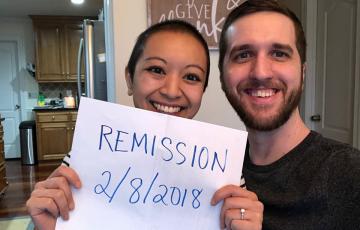Search Results
Managing Long-Term and Late Effects
Many long-term and late effects of treatment can be managed. Work closely with your doctor and follow these tips to help keep long-term and late effects at bay:
Chronic Lymphocytic Leukemia
Chronic lymphocytic leukemia (CLL)- Is a type of blood cancer that begins in the bone marrow
- Can progress either slowly or quickly depending on the form it takes
Click here to access CLL statistics.

Tom
Hello Friends — this is my leukemia journey, For those of you who don’t know me, my entire 38-year teaching career was spent with 9-12 year olds. I’ve always relished the authenticity and passion of this age group and that led me to a very satisfying and rewarding chapter in my life.

Cynthia
Cynthia was on a family vacation in 2015 when she began experiencing back pain so severe that she had to be in a wheelchair for the rest of the trip. When she returned home, Cynthia went to see her doctor who referred her to an oncologist. After several tests, Cynthia was diagnosed with multiple myeloma. She was devastated. Chemotherapy and radiation soon followed, along with horrible side effects, sleepless nights and countless blood transfusions. But Cynthia was not going to let cancer defeat her.

Whitney
I am delighted to be a new member of the Clinical Trial Support Center team at The Leukemia & Lymphoma Society (LLS)! After eight years as a clinical nurse, charge nurse, and assistant nurse manager at various oncology hospitals across the country, I am honored to now work with blood cancer patients as a Spanish-speaking, CTSC nurse navigator.

Jania
In November 2018, I was diagnosed with acute myeloid leukemia (AML). It's a type of cancer of the blood and bone marrow that progresses very rapidly. When I was initially diagnosed, I believed my life was over. As a seventeen-year-old high school student attending school from a homeless shelter, going to bed hungry most nights, I considered dropping out to help my mother with my younger sister and brother. I couldn't fathom the financial burdens that would follow with medical treatment. I felt like the more I attempted to correct things, the worse they became.
Chemotherapy and Drug Therapy
About ChemotherapyChemotherapy drugs kill fast-growing cells throughout the body, including both cancer cells and normal, healthy cells.
Chemotherapy is typically given in cycles. Each cycle is made up of a certain number of days of treatment, followed by a certain number of days of rest. The rest days allow the body time to recover before the next treatment cycle begins.
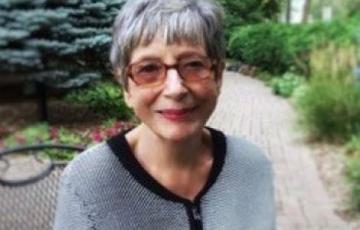
Ilse
Thirty years ago I was told I needed additional blood tests after a routine check-up. I was too busy to follow those instructions. Looking back, it probably was an excuse not to have to face the truth. My fatigue and many infections I had attributed to stress in my personal life. I convinced myself there was nothing to worry about.
Childhood Hodgkin Lymphoma
Because of new and better therapies, cancer survival rates for children have improved dramatically during the last several decades. Scientists continue to search for the causes of childhood lymphoma so they can develop better treatments with less toxic side effects.
Diagnosis
An accurate diagnosis of the type of leukemia is important. The exact diagnosis helps the doctor to
- Estimate how the disease will progress
- Determine the appropriate treatment
After your doctor or clinician takes your blood, he or she sends it to a lab for a complete blood count (CBC), which shows the number of red cells, white cells and platelets in your blood.
Long-Term and Late Effects of Treatment
Some side effects of cancer treatment, such as fatigue, can linger for months or years after therapy. Some medical conditions like heart disease and other cancers may not appear until years after treatment ends.
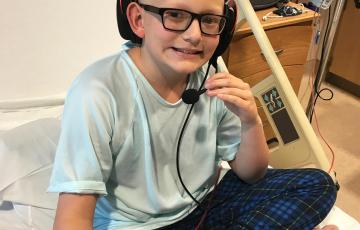
Nicolas
My name is Nicolas and I am 14 years old. Before my diagnosis I was a completely healthy child, in fact I was rarely ever sick. I played baseball, had straight A’s, and recently had recently got a new puppy. This sense of normalcy came to a screeching halt on January 13, 2018. That’s the day I was admitted into the pediatric ICU and the day I first heard the words, “you have cancer.” My family and I were devastated.
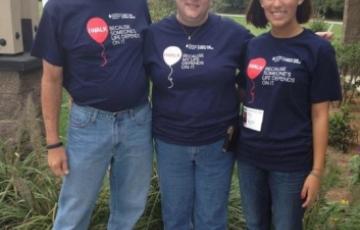
Amy
My story begins on Christmas Eve 2008. My daughter was a 8th grader and was singing her first solo during Christmas Eve mass. I was sick!

Matthew "Scott"
On January 11th, 2019 at 9:35 p.m., exactly 11 days before my baby brother's 40th birthday cancer decided to come to the party uninvited. It would be the first time in my life that I would see my mother, the strongest person I know, collapse in utter disbelief. He had a cough he couldn't shake, his doctor sent him for some blood work at lunchtime, by dinnertime his platelets were 7,000 and his Dr. said he should go to the hospital for some tests, and by bedtime we were transporting him to The James Cancer Hospital and Solove Research Institute.

Carol
I traveled with my friends Karen and Beth to Death Valley in February 2020 for a cycling trip where, despite Beth’s fitness and the amount of cycling we’d done, she became short of breath on the steep climbs. She would stop and catch her breath, then continue cycling. This wasn’t normal behavior, but Beth shrugged it off. “We all have good and bad days on the bicycle,” she said. On our last day of cycling, we were planning another hilly route. “You guys go ahead.

Jonathan
Life is such a blessing. Sometimes we think that there’s no way out, we limit ourselves, or we simply think to give up. Truth is, like we say in my family, “Solo hay que estar vivo para ver cosa,” or “You only have to be alive to witness things.”
My parents are first-generation immigrants from the Dominican Republic. I am a cancer survivor.
Stem Cell Transplantation
Allogeneic stem cell transplantation has been used to treat and sometimes cure chronic myelomonocytic leukemia (CMML) patients. However, because of the high, sometimes life-threatening risks associated with stem cell transplantation, doctors rarely use it in elderly patients or patients in poor health.
Stem Cell Transplantation
The goal of stem cell transplantation is to cure the patient’s cancer by destroying the cancer cells in the bone marrow with high doses of chemotherapy and then replacing them with new, healthy blood-forming stem cells. The healthy blood stem cells will grow and multiply forming new bone marrow and blood cells. There are two main types of stem cell transplantation. They are
Treatment Outcomes
A few decades ago, there were very low cure rates in both children and adults diagnosed with ALL. Today, childhood ALL has one of the highest cure rates of all childhood cancers, approaching 92 percent for children younger than 15 years and more than 94 percent for children younger than 5 years.
Follow-Up Care
Find more information about follow-up care, including what to expect, long-term and late effects of treatment, survivorship clinics, and other resources, such as The National Comprehensive Cancer Network (NCCN) treatment guidelines.

Jamie
After he was diagnosed with blood cancer in 2013, Jamie was told by doctors that he’d never walk again, let alone ride a bike. Despite those predictions, he finished a 540-mile ride in June 2019 to raise money for The Leukemia & Lymphoma Society (LLS).
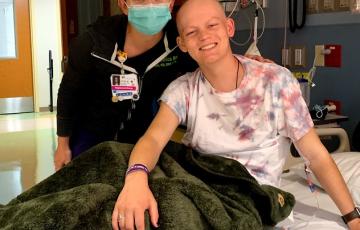
Seth
It was in my sophomore year at the University of Colorado Colorado Springs right around March 2021 when I first discovered the lump in my neck. I was simply doing homework at my desk, and my hand unconsciously brushed against my neck. I stopped and started to feel the unusual lump in my neck.
Soon after that, the tests started.
Disease Complications
As myelofibrosis (MF) progresses, complications may arise:
Follow-Up Care
Click here for information about follow-up care, including what to expect, long-term and late effects of treatment, survivorship clinics, and other resources such as The National Comprehensive Cancer Network (NCCN) treatment guidelines.
Use the Survivorship Workbook to collect all the important information you need throughout diagnosis, treatment, follow-up care and long-term management of a blood cancer.
